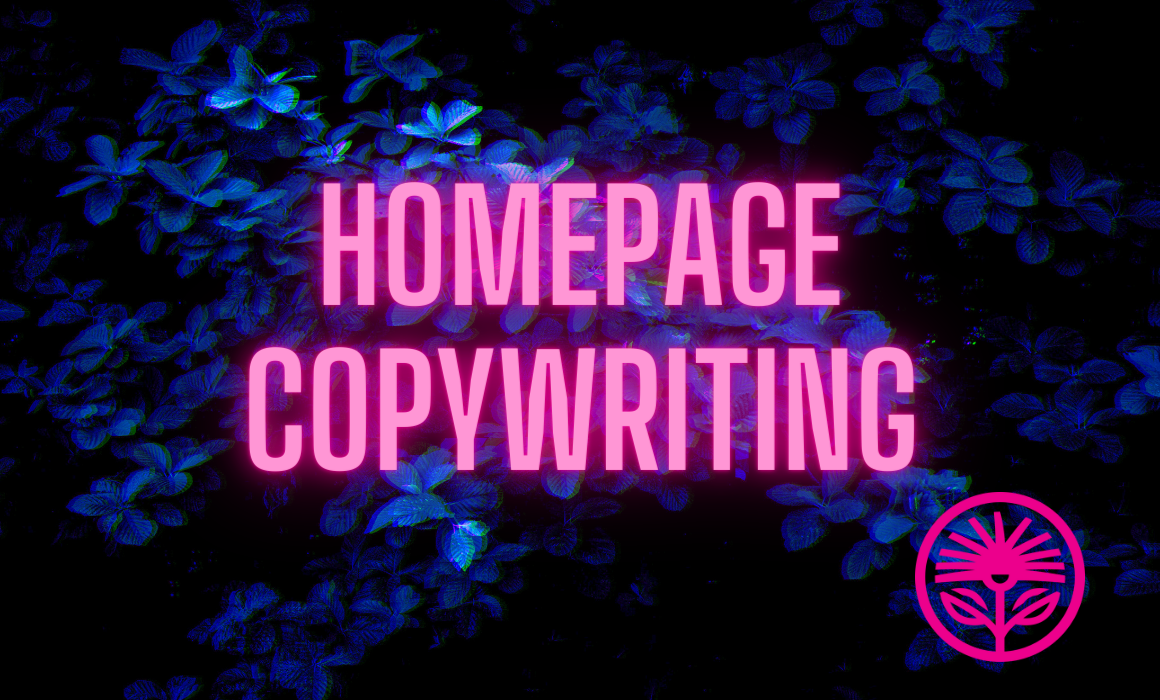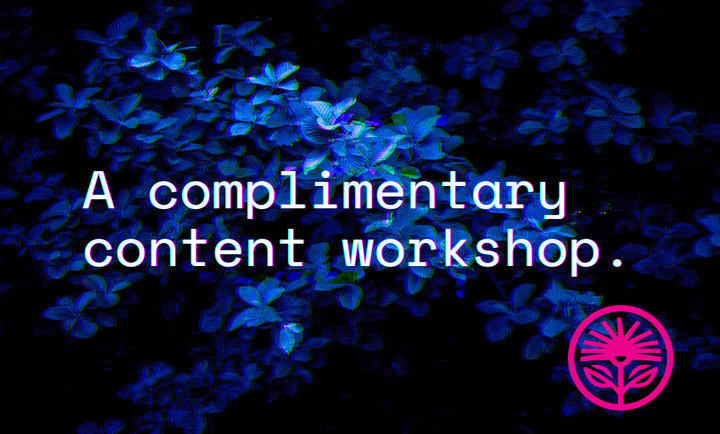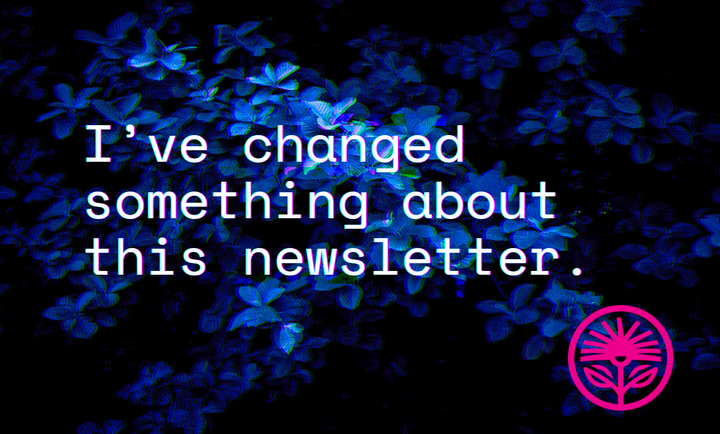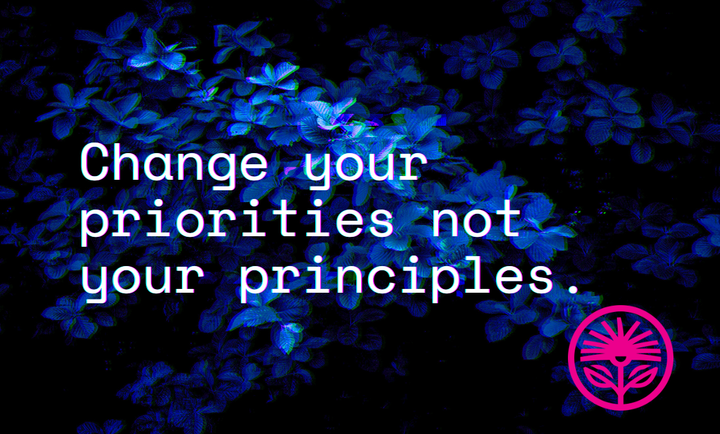Kelford Labs Weekly: It's time to update the homepage
How to write website copy.

If it’s time to (re)write copy for your homepage to better demonstrate your value to your ideal customers, where do you start?
First, let’s dispel the false notion that the homepage is sacred space that mustn’t be edited often.
If you approach it that way, it's too easy to push out refinements. Imposter Syndrome will keep you from focusing and claiming your space and expertise. Analysis Paralysis will keep you from refining and demonstrating your value absent of the perfect data to define the path for you.
In reality, your website’s homepage is the ideal place to test out messaging, stay relevant with your audience, and further refine your positioning.
Luckily for both of us, I’m working on homepage copywriting today for a favorite client. So I’m going to walk you through my process to articulate focus and demonstrate unique value on the homepage.
“There are unlimited ways of making a lousy idea look brilliant, and almost any competent art director can do it and even win prizes at it. There is hardly any way at all to make a lousy idea read brilliantly; the most you can shoot for is writing it competently enough so that it doesn’t rot the paper.”
— Howard Gossage, The Book of Gossage
Step one is to think about to whom we’re talking.
Who is reading the homepage, and what do they need to know at this moment?
Step two is to ask ourselves: How far away are they from us?
Are they likely to be brand new to us—never having heard of our business before—or are they familiar with us and are arriving to make a purchase or get additional information?
For this project, I know that my client’s ideal customers are going to the website to further vet her service offering or gain extra clarity about what sets her apart in a competitive market. So they’re not strangers, they’re somewhat acquainted with each other.
In our Marketing Rangefinder parlance, they’re Close to the business, where what they want above all is insight into what sets this particular business apart from the other options.
They want more certainty that the business is good.
And, so, now that I know that my job is to provide insights into what sets this particular business apart, I can ask myself: What actually makes this business different and special?
This brings me to step three, where the marketing position comes into play.
We review that and determine what we’d need to say to make our ideal customer understand that we get them, we understand their challenge, and we can help.
For privacy’s sake I won’t reproduce the particular position I’m working from here, but these are the pieces you’ll need:
Who: Who is the ideal customer? What are they like? What’s their vibe?
What: What is their challenge or opportunity they need help with, in their words?
How: How do you help in your unique way?
When: When do they need help or experience their challenge?
Where: Where are they and where do they go when they need help?
With these pieces in place, I now know to whom I’m writing and what they specifically need to hear.
“Your point of view should answer your audience’s pivotal question: Why should I listen to you?”
— Rochelle Moulton, The Authority Code
This is absolutely critical to writing copy that demonstrates value. It requires us to know what our value is, and who experiences it most clearly.
Otherwise, we’re just guessing. We’re hoping. And we’re spinning around in circles.
Only now is it finally time to get down to writing, which is step four.
At this phase, I try to imagine, as clearly as I can, the context and the mindset of the reader, which we know from the marketing position. What time is it? What were they doing just before they read this copy?
What do they hope to do next once they’ve read it? What’s their ideal outcome?
And what’s the one thing they’d need to hear to fulfill those desires or goals?
“So, ‘good writerly habit’ might consist of continually revising toward specificity.”
— George Saunders, A Swim in a Pond in the Rain
For my client, I know her ideal customers want to know she has more experience than potential competitors, which has led her to take a novel approach to her field. She wants to select for clients who’ve experienced the other options in her field, but were unsatisfied for a particular reason.
So, what does your ideal customer need to hear? What’s most important to them, and how could you show them you get it as quickly as possible?
That’s the assignment when you’re writing copy: demonstrating your unique value as quickly and as captivatingly as you possibly can.
“Writing demands, absolutely requires, a type of intense concentration, like chess or playing an instrument. This, too, is a skill.”
— Scott L. Montgomery, The Chicago Guide to Communicating Science
We start by just writing the plain facts, with no polish.
So I’ll write down: “When you want [my client’s industry], make sure you get [my client’s differentiation]. So you always [my client’s customer’s goal] without [my client’s customer’s fear].”
Take a moment and write down your version.
What do your best customers want in their words? And what do you do in your special way? How does that help them get what they want? And what does it help them avoid?
Finally, we arrive at the step five where we assess the writing and finesse the style.
As an example, when we first started working on our website copy for Kelford Inc., our very first draft of the intro copy was along the lines of: “We bring the best of us to reveal the best in you. So you can find the best of them. Your ideal customers, your biggest champions, and your most loyal supporters.”
It’s not good copy, and it isn’t meant to be. It’s an outline, a sentiment, a vibe.
“Great writers are not necessarily those people who write a good first draft, but rather those people who can write a bad first draft quickly and then edit it to develop their ideas.”
— Smith & Lewis, Both/And Thinking
We wanted our ideal customers to understand that we live and breathe this stuff, which makes us able to help the people who don’t live it, to love it a little bit more.
And that internal, intrinsic motivation is what makes our clients good at what they do, and us good at what we do.
“Emotion equates the physiological state of the listener with that of the speaker, which makes it more likely that the listener will process incoming information in a similar manner to how the speaker sees it.”
— Tali Sharot, The Influential Mind
Once we had the sentiment figured out, we didn’t stop there. After round after round of revision, we finally got to:
“We live marketing so you can love it.”
It says the same thing, it makes the same point, but so much more quickly. So much more clearly.
And it selects for clients who don’t currently love their marketing, but who want to. And it de-selects for clients who want to fully outsource their thinking or who want to take a hands-off approach to their marketing.
Now, your turn.
How can you polish and refine your starting point to make it pithier, stronger, clearer?
“Words that rhyme are much more memorable than words that don't; concrete nouns are easier to remember than abstract nouns; dynamic images are more memorable than static images; alliteration aids memory. A striped skunk making a slam dunk is a stickier thought than a patterned mustelid engaging in athletic activity.”
— Joshua Foer, Moonwalking with Einstein
How can you say what you’re actually thinking, to the person who actually needs to hear it, instead of couching it in caveats or burying it in verbosity?
If you’re struggling, make sure you have a super clear visualization of your audience’s context.
Make sure you’re incredibly clear on what sets your approach apart from other options, and why your ideal customer would prefer your approach.
If we don’t know that, we’ll never be able to write copy that connects, because we’re disconnected from our customers. We need to live and breathe their context, their goals, their fears, their hopes.
And we need to know what we can say, in one simple phrase, that will demonstrate to them that we can help—that we’re uniquely qualified to help—before they ever work with us.



